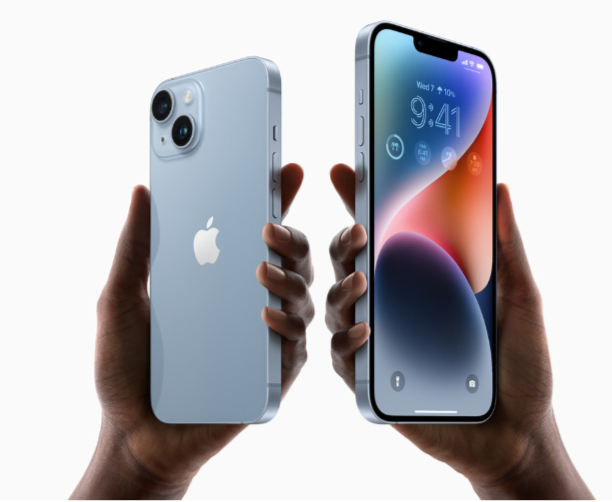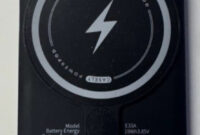Apple has been facing considerable criticism in the tech and finance media due to its notably chaotic venture into artificial intelligence. Following a June event that announced a revamped AI-powered Siri, the company has postponed its launch indefinitely. The AI features that Apple has introduced, such as text message summaries, are laughably ineffective.
The criticism regarding Apple’s sluggish rollout is not entirely unjust. However, it does sometimes miss the mark.
Like every major tech player, Apple is vying to find ways to incorporate AI into its offerings. Why is that? Well, it’s the future! What issues is it addressing? So far, that remains ambiguous! Are customers asking for it? Haha, definitely not. In fact, last year the negative reaction to one of Apple’s initial ads for its AI was so severe that the company had to retract the advertisement.
The primary reason companies are pursuing this is due to Wall Street’s demands. Investors have been eagerly awaiting an Apple “super cycle”—a technology upgrade so appealing that consumers would quickly rush to purchase the new version.
In an effort to satisfy shareholders, Apple made an unusual misstep. The company appears to be acknowledging its mistake, stating that the postponed features will launch “in the coming year.”
Naturally, the vague delay has only fueled the narrative suggesting that Apple has fallen behind in this crucial technological advancement.
The notion that AI can only be failed is prevalent. There’s a common saying in political discussions: “The party can never fail, it can only be failed.” It criticizes ideological gatekeepers who may, for instance, blame voters for their party’s shortcomings instead of the party itself.
That same mindset is emerging among the most fervent advocates of AI. AI cannot fail; it can only be failed. Failed by individuals like you and me, the unaware detractors who simply don’t grasp its potential. (While even supporters of AI will admit to the limitations of current models—no one argues the garbage populating Facebook is anything but trash—there exists a prevailing belief in tech that AI is both inescapable and transformative.)
Tech journalists like Kevin Roose from the New York Times have recently posited that Apple has failed at AI rather than the reverse.
“Apple is not rising to the occasion in AI,” Roose remarked on his podcast, Hard Fork, earlier this month. “I just believe that when developing products that incorporate generative AI, you need to be more open to mistakes, errors, and things that may seem a bit rough.”
To that, I would respond, with all due respect: Absolutely not.
Roose is correct that Apple is, to put it mildly, a meticulous producer of consumer goods. After all, it is the $3 trillion empire established by the famously detail-oriented Steve Jobs.
The Apple brand probably represents the most carefully curated corporate identity on the planet. Its “walled garden” of iOS—certainly disliked by developers and subject to accusations of monopolistic practices—is also what enables a billion users to rely on Apple with their sensitive personal information.
Apple’s commitment to privacy and security is why many of us don’t hesitate to scan our faces, keep our banking details saved, or share our live location through our devices.
Moreover, we trust Apple to safeguard our data, and we have confidence that it will create products that are easy to use right from the box. You can purchase a new iPhone, AirPods, or Apple Watch and rest assured that the moment you turn it on, a user-friendly interface will guide you through the setup process and seamlessly connect with your other devices. You will hardly ever need a manual filled with tiny text. Even your Boomer parents can navigate FaceTime calls with minimal fuss.
At one point in the podcast, Roose argues that “there are users of AI systems who are aware that they are not infallible,” suggesting these everyday users recognize the correct and incorrect ways to interact with a chatbot.
This is where we, the general public, are supposedly failing AI. Because beyond being humans with jobs, social lives, laundry to do, art to create, and children to nurture, we should also learn how to carefully navigate the limits of large language models that may deliver uncertain information.
Roose asserts that Apple should continue to integrate AI into its products and simply acclimate to the idea that these features might be raw and overly advanced for the average consumer.
And once more, with all due respect, I would ask: What is the purpose?
As noted by Hard Fork co-host Casey Newton in the same episode, it’s not as if Google or Amazon has discovered some remarkable application that compels users to promptly buy a new Pixel phone or an Echo device.
“AI remains more of a scientific and research narrative than a product narrative,” observes Newton.
To put it differently: Large language models are intriguing scientific advancements. They represent an academic marvel with immense possibilities and some initial commercial achievements, such as OpenAI’s ChatGPT and Anthropic’s Claude. However, a bot that achieves 80% accuracy — a number created by Newton, but we’ll use it — isn’t particularly beneficial as a consumer product.
In June, Apple proposed an appealing scenario for its revamped Siri. Picture yourself, stressed and running late for work, simply saying into your phone: Hey Siri, what time is my mom’s flight arriving? And does it land at JFK or LaGuardia? Ideally, Siri could scour your emails and texts concerning your mom and provide you with an answer. This would eliminate several tedious steps of opening your email to track down the flight number, copying it, and then pasting it into Google to check the flight’s status.
If it is 100% accurate, it’s a tremendous time saver. If it’s below 100% accurate, it becomes worthless. Because even with a 2% chance of being incorrect, there’s also a 2% chance that you could leave mom stranded at the airport, and understandably, she would be quite disappointed. Moms deserve better!
Apple’s most lucrative product might finally be set for a necessary upgrade.
The tech giant is reportedly preparing to make its largest investment in years, debuting a notably sleeker iPhone to potentially rejuvenate interest in its primary revenue source.
This new slim iPhone, sometimes dubbed the iPhone “Slim” or “Air” in media coverage, is expected to launch later this year as part of the iPhone 17 series, according to reports from Bloomberg, the Wall Street Journal, and The Information. This represents the most significant design change for the iPhone in years, possibly since the introduction of the home button-free iPhone X in 2017.
But will that suffice?
Apple’s iPhone sector is stable; in its first fiscal quarter, earnings from smartphone sales were about the same as the previous year, and the overall revenue of the company rose by 4%. However, the product faces numerous challenges, including consumers keeping their iPhones for longer periods, iPhone revenue not meeting Wall Street’s expectations this last quarter, and Apple losing market share to local competitors in China. Apple must discover a way to grow its most essential business.
This isn’t a new narrative. Apple has consistently faced pressure to innovate and expand its iPhone segment, even with obstacles such as a stagnant smartphone market and intense competition in China.
However, this time, Apple’s significant investment in artificial intelligence – which it has been promoting as a feature for the iPhone 16 – is taking more time than anticipated to yield results. In the interim, Apple may need to depend on its physical devices to impress consumers.
“I believe the pressure on Apple has never been greater since Samsung started capturing market share” by emphasizing its larger screens, remarked Patrick Moorhead, CEO and principal analyst at tech advisory firm Moor Insights & Strategy.
The slimmer iPhone 17 anticipated to launch this year will measure approximately two millimeters thinner than the existing iPhone, according to Bloomberg. It is expected to replace the iPhone Plus, the larger model of the baseline version, in Apple’s smartphone lineup. Its thinner design is predicted to be its main attraction; otherwise, it will share many characteristics with current iPhones, including the dedicated camera button and the Dynamic Island cutout at the top of the screen, as per Bloomberg’s report.
A transition like this could be especially appealing in China, where product aesthetics hold significant importance for consumers, stated Nabila Popal, a senior director for market research company the International Data Corporation’s data and analytics team.
Appealing to Chinese consumers is crucial since Apple’s revenue in China declined in the first fiscal quarter: $18.5 billion, down from $21 billion the previous year. Fourth-quarter iPhone sales in China dropped 25% year-over-year, largely due to heightened competition from local brands, according to market research firm Canalys. Chinese technology giant Xiaomi overtook Apple to become the world’s second-largest smartphone brand in August, as reported by Counterpoint Research, a firm that monitors the smartphone industry, in September.
“Hardware advancements are crucial for consumers in China,” stated Popal, an expert in smartphone and consumer tech research. “Considering the success of thin designs in Android models, I believe that introducing a similar device for Apple could increase its market share” in China.
The company’s competitors have already gotten ahead of Apple. In January, Samsung revealed the Galaxy S25 Edge, a more streamlined version of its newest smartphone. Meanwhile, Oppo, a key player in the Chinese mobile market, launched a very slim version of its foldable device known as the Find N5 in February.
However, some analysts argue that merely having an eye-catching new design will not be enough to attract buyers. Apple must persuade consumers to feel the need for a new iPhone, regardless of whether their current one needs replacing or not.
Smartphones have reached a point of maturity; they no longer experience significant changes each year, unlike in the early 2010s, when upgrading meant experiencing features like fingerprint unlocking for the first time or having a screen that fit more comfortably in your pocket. UBS analysts noted on March 25 that the typical iPhone user (in markets outside of China) holds onto their phones for a longer time: 37 months, compared to approximately 34 months in their survey from the previous year.
Apple Intelligence, the brand for Apple’s AI-driven software, may be the key to prompting that change. However, the features currently available are not particularly compelling for an upgrade. (For instance: summarizing notifications, creating custom emojis, and seeking tech support from Siri.)
Recently, Apple indicated that one of its most significant upcoming capabilities tied to Apple Intelligence, an upgraded Siri, has been postponed. Rather than just setting alarms and answering inquiries, the new Siri is expected to perform tasks within applications on behalf of users and use data saved on a person’s iPhone to inform its replies. Apple believes these adjustments could transform how we operate our phones and engage with apps.
Nevertheless, consumers will have to wait a bit longer to experience this. Apple anticipates that it will launch in the next year.
During its Worldwide Developers Conference keynote on June 9, Apple is likely to provide some insights into what’s next for Apple Intelligence, which was announced this week.
The announcements from Apple – and whether it can fulfill those commitments – could determine if AI is sufficiently valuable to persuade iPhone users to pay for an upgrade.
Apple requires something substantial – and that might involve adopting a thinner design. Wall Street will be keenly observing to see if more intelligent software or a more sleek design will make the difference.
“If you own an (iPhone) 14, or even a 15, there’s likely no financial incentive to upgrade at this moment,” commented David Vogt, an analyst at UBS. “And I think that’s the kind of pressure Apple is experiencing.”



